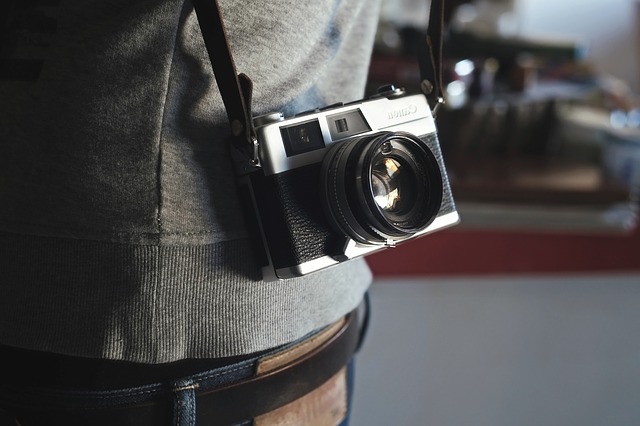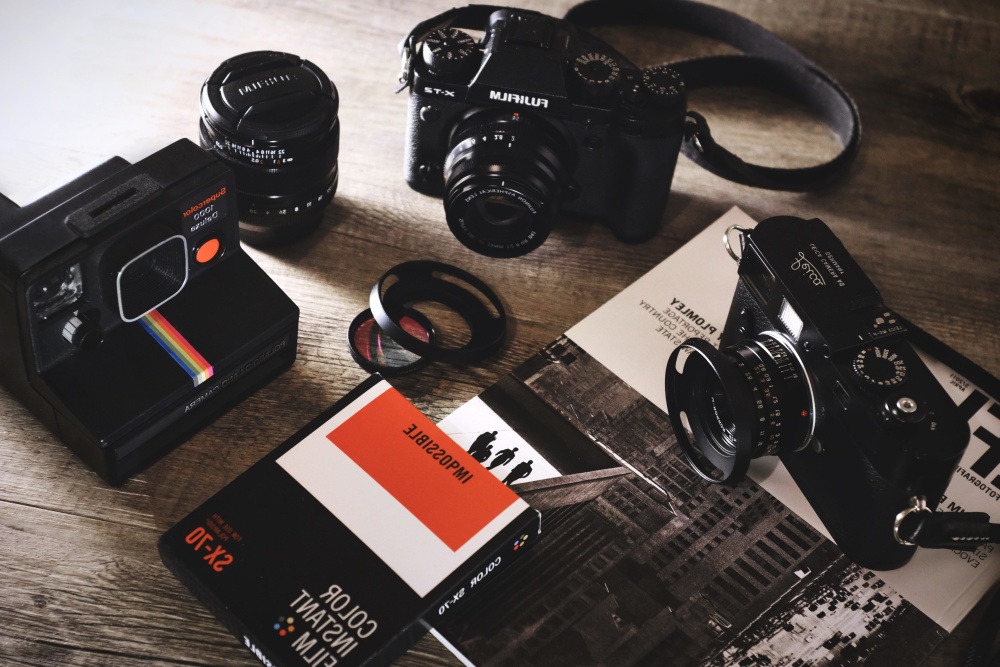Getting Start in Photography

Starting point
Every good or even great photographers has to start somewhere at some point. It might start from just a hobby or point of interest with limited or no knowledge at all, then learning the basics and continue progressing from there. (probably) same with everyone else, at the beginning I wouldn't call or even consider photography as a hobby. I only take photos, only during holidays when I travel to touristy places. Other than that, zip, na-da. Never occurred to me terms like exposure, composition, etc. What I know is just good or bad pictures, too bright or too dark, just snap-and-snap. So, you can consider my knowledge in photography is equal to zero.
My first camera is a small pocket camera by Sony (forgot what series / model). Then when I stay in Japan for few weeks, something change. I started to gain interest in DSLR camera, thought probably “cool” if I got one of those. Travel around with a dslr camera hangin’ on me. So, I do a little bit research which dslr camera should I buy that within budget. And finally bought, Nikon DSLR D3300 with good price package. From then, my interest in photography getting bigger. One of the reason I bought a dslr camera is because, I don't want a camera just for quick snap a picture. I want to have a control when taking a picture. So, I won't get any too bright or too dark picture. From there, I started to learn about exposure, aperture, shutter speed, iso, and what does it impact to the photograph that I take. Until now, it's continuous learning process.

All about the gear (?)
What about the gear? Which camera should I use or buy? These question is always there for people that just starting out in photography. If you are just starting out photography today, then you are lucky. You have a wide variety of cameras that you can get your hands on. When I just starting out there's only two options: point-and-shoot compact camera or DSLR. There's a big difference in image capability and price between these two options. But, nowadays anybody can purchase mirrorless camera that are not only very lightweight but also highly capable of delivering professional, magazine-quality images.
No matter which camera you buy or that you already have, it’s more important to learn how to use it to the maximum. Like what I tell you earlier, I started out with compact point-and-shoot camera. At some point, after a while using it I found out what limiting is the lack of control on how much light you want in the picture. When it's bright sunny day, and the sun is right behind you, it's very hard to take a decent properly light / expose picture. It's either, your background is too bright or your subject is to dark. The same thing when shooting at night. Some occasion you need to use on-camera flash. When using it, you might have bright white subject on your picture because of the flash is pointing directly to your subject. At that point, I needed more advance camera that can control how much light in a picture, that's why I switch to DSLR camera. Right now, I'm using a mirrorless camera by Panasonic (Lumix GX85). The reason why I switch to mirrorless camera, is because it's getting too heavy / tiresome to bring a dslr camera with lenses during travel. So, I want a lightweight camera that also able to change lenses as needed, but still have a manual control on it.
So, the key take is this: the best camera is the one that you have with you. You need to know about every aspect of your camera. Once you found the camera you have is limiting your progression then you can think to upgrade your gear.
What should I learn when first?
The first thing you need to learn is your camera itself. You need to master the ins and outs of your camera. Every component, button, and function in your camera. Once you master it, it'll be easier to operate and you can quickly adjust your camera setting to suit your need.
You can also learn about exposure triangle (aperture, shutter speed, and iso), from your camera settings.
- Aperture can be defined as the opening in a lens through which light passes to enter the camera. As aperture changes in size, it alters the overall amount of light that reaches your camera sensor – and therefore the brightness of your image. A large aperture (a wide opening) will pass a lot of light, resulting in a brighter photograph. A small aperture does just the opposite, making a photo darker.
- Shutter speed is the length of time camera shutter is open, exposing light onto the camera sensor. Shutter speed is responsible for two particular things: changing the brightness of your photo, and creating dramatic effects by either freezing action or blurring motion.
- ISO is simply a camera setting that will brighten or darken a photo. As you increase your ISO number, your photos will grow progressively brighter. However, raising your ISO has consequences. A photo taken at too high of an ISO will show a lot of grain, also known as noise, and might not be usable. So, brightening a photo via ISO is always a trade-off

Learning composition is also crucial. Composition is a way of guiding the viewer’s eye towards the most important elements of your work, sometimes – in a very specific order. A good composition can help make a masterpiece even out of the dullest objects and subjects in the plainest of environments. On the other hand, a bad composition can ruin a photograph completely, despite how interesting the subject may be.
Here are few basic composition checklist:
- Is the horizon straight?
- Are the edges of the frame clean? Is anything poking into the frame that distract the viewer? Are there elements of the image that lead the eye out of the frame that could be positioned better?
- Is the background clean – are there distracting elements like a car parked in the background, or a fence or a house that doesn’t fit? Can you move or change the angle to remove that element?
- Is the foreground tidy? Are you shooting a landscape or natural scene where there might be branches or leaves or twigs in the foreground that could be tidied away?
- The position of people in the shot. Do they have a lamp post or a tree growing out of the top of their head? Have you chopped heads, feet, arms, or legs off?
- Camera position – are you at the right height/angle for the best composition?
- Point of focus – when taking photos of people/creatures/animals have you focused on the eye? Do you have a catchlight in the eye?
- Less is more – what truly needs to be in the frame? What can you leave out?
These are not rules. While there are some guidelines you should consider when creating an aesthetically pleasing image, it is entirely possible to ignore them all and still make a stunning image.
What's next?
Get active, practice makes better. The only way that you’ll really learn photography is to bring your camera everywhere and make time for shooting. After all, what better way to practice and apply what you’ve learned than by actually going out there and taking pictures?
